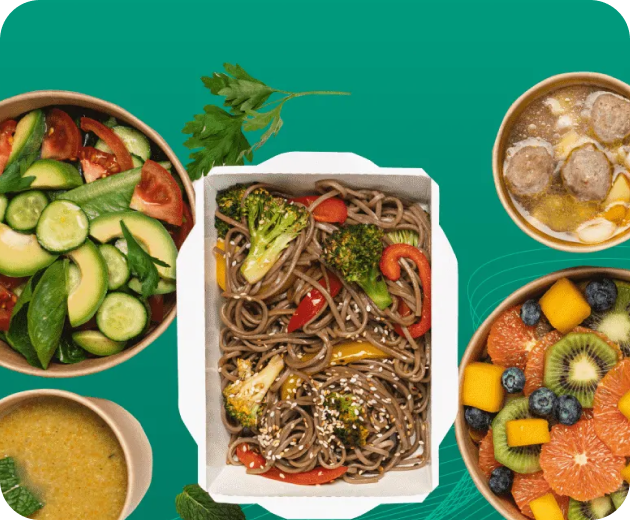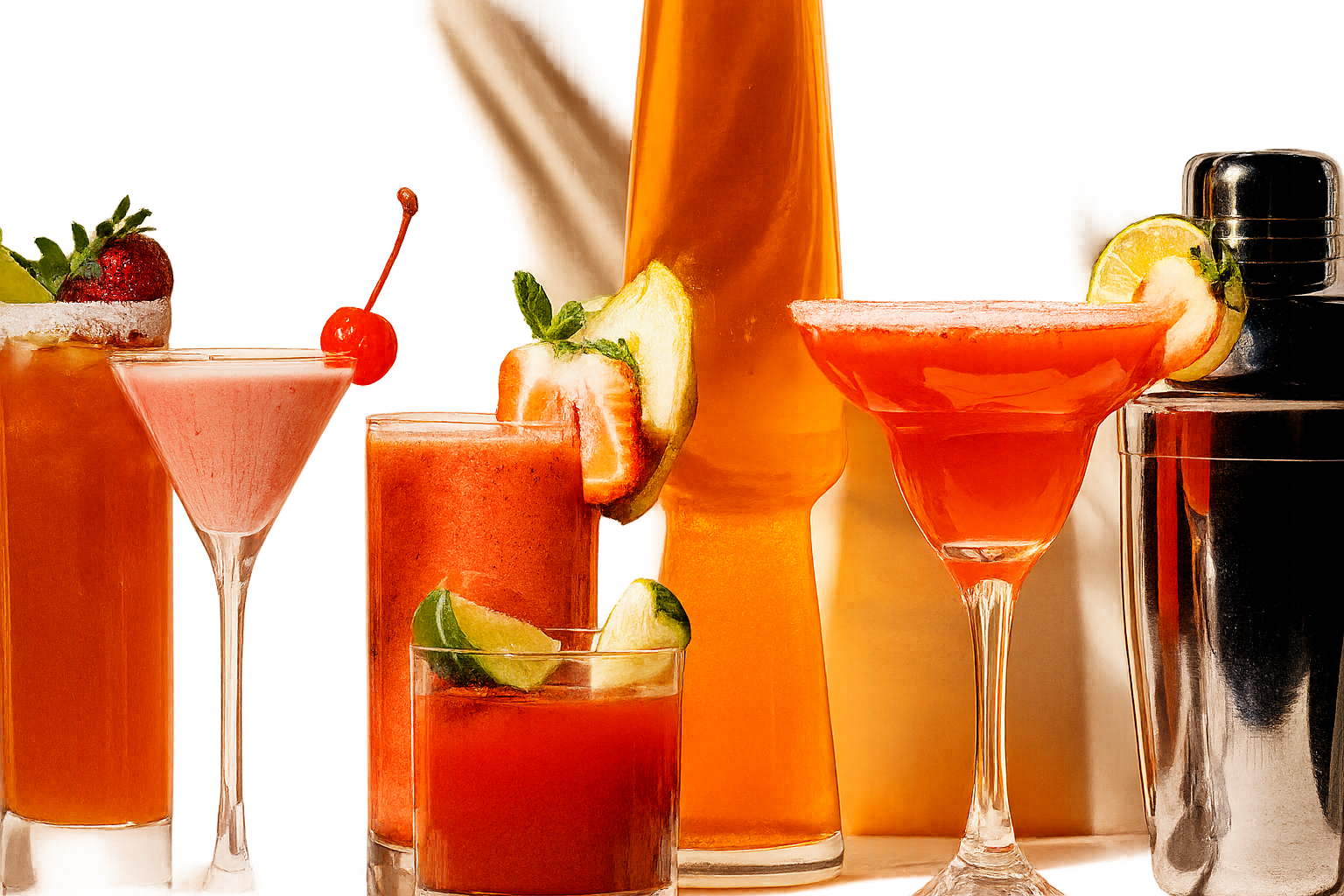Mastering CPG Sales in Today’s Ever-Changing Market
CPG sales, or consumer packaged goods sales, combine strategy with the fast-paced world of mass-market products.
From snacks and beverages to cleaning supplies and personal care items, these products fill store shelves.
Selling them successfully means understanding consumer needs and market trends.
Let’s take a deep look into what makes this industry tick and how brands can ace the CPG sales game.
What Are Consumer Packaged Goods?
Consumer packaged goods (CPGs) are everyday-use items that people purchase regularly.
These include food, beverages, toiletries, household cleaning products, and more.
What makes them unique is their fast turnover rate on shelves and in homes.
Since these items are often low-cost and high-use, they don’t sit around for long.
The products are typically mass-produced and mass-marketed, giving them universal appeal.
For example, a bag of chips you find in your local grocery store is a prime example of a CPG.
The beauty of CPGs lies in their predictability; they cater to needs that consumers will always have, like staying fed, hydrated, or clean.
Why CPG Sales Matter in Today’s Market
CPG sales play a central role in how businesses thrive. These staple goods create consistent demand, even during economic downturns.
People will always need essentials like toothpaste or a snack to toss in their gym bag.
But the importance of CPG sales goes beyond its steady demand. It serves as a sandbox for innovation.
Through evolving trends in CPG marketing, brands explore creative ways to connect with consumers.
Whether it’s a sustainable packaging revamp or a bold new flavor, the CPG world thrives on experimentation.
That’s why understanding how to move products efficiently matters to both businesses and consumers.
Brands that dominate CPG sales enjoy not just financial success but also customer loyalty on a massive scale.
Understanding the CPG Sales Landscape
To understand how CPG sales work, you must know about the ecosystem it operates within.
It’s a network filled with key players, fierce competition, and diverse sales channels.
Key Players: Manufacturers, Distributors, Retailers
At the heart of the CPG industry lie three main players: manufacturers, distributors, and retailers.
Manufacturers are the brands creating the products, from globally recognized names to smaller regional players.
Distributors act as middlemen, moving goods from manufacturers to retailers.
Then there are the retailers, the final point of contact for consumers, ranging from large grocery chains to convenience stores.
Each player’s role is crucial. Manufacturers depend on distributors to get their products on store shelves.
Retailers, on the other hand, rely on manufacturers to provide marketable, in-demand goods. Together, they keep the CPG machine running smoothly.
Direct-to-consumer (DTC) vs. Traditional Retail Channels
For years, traditional retail channels like supermarkets and drugstores dominated CPG sales.
But with the digital boom, CPG growth has been fueled by direct-to-consumer (DTC) sales. DTC cuts out the middlemen.
From quirky snack subscription boxes to eco-friendly cleaning supplies, many brands are opting to sell online.
This shift is also changing how brands invest in food marketing.
Rather than big-budget TV ads, many now focus on personalized email campaigns and social media storytelling.
It’s all about cultivating stronger relationships with the consumer.
Consumer Behavior and Buying Trends
Consumer preferences constantly evolve, and being in tune with these shifts can make or break a CPG brand.
Evolving Consumer Expectations
The modern shopper is more informed and demanding than ever. People now expect transparency, especially about ingredients and sourcing.
This directly impacts how brands tackle CPG pricing.
For example, consumers may be willing to pay a premium for organic snacks, while others seek competitively priced “value” options.
The Impact of Digital and E-Commerce
The rise of e-commerce for CPG has revolutionized how CPG brands sell. Online grocery shopping is no longer a convenience but a habit for millions.
This shift has brought about the need for a digital shelf strategy. Brands not only compete for physical shelf space but also online visibility.
E-commerce platforms are hotbeds of competition where eye-catching visuals, reviews, and ratings can determine whether a product succeeds or fades into obscurity.
Health, Sustainability, and Convenience Drivers
Shoppers, especially younger generations, prioritize sustainability and health-consciousness.
Products free from artificial additives or housed in eco-friendly materials are no longer niche offerings; they are mainstream demands.
Factor in busy lifestyles, and you’ll see why convenience-focused innovations like single-serve packaging are booming.
Using food intelligence, companies analyze trends like plant-based eating or sugar-free alternatives to stay ahead. Brands that anticipate these shifting demands are the ones poised for success.
Top Challenges in CPG Sales
CPG sales come with their fair share of hurdles. Knowing what these challenges are can help brands build a roadmap to tackle them effectively.
Retail Shelf Competition
Shelf space is prime real estate in the CPG world, and the fight for it is fierce. Brands have to negotiate and even pay for prime placements.
On top of that, they must stand out among countless items vying for shoppers’ attention.
Supply Chain Disruptions
Unforeseen supply-chain issues, from ingredient shortages to transportation delays, can wreak havoc on CPG brands.
Efficient revenue management strategies become essential during such crises to minimize losses and keep goods flowing.
Data Fragmentation
The CPG industry thrives on data, but fragmented systems can make it difficult for companies to centralize and analyze it.
This is where tools like CPG analytics come into play, helping brands piece together the puzzle and extract valuable insights.
Winning Strategies for CPG Sales Success
What separates successful CPG brands from the rest? A combination of intentional planning, cutting-edge technology, and an ability to adapt.
Set specific goals
Before implementing any marketing strategy, it’s important to set specific goals that align with your overall business objectives.
These goals can include increasing sales by a certain percentage or expanding into a new market.
Having clear and measurable goals will help guide your marketing efforts and measure their success.
Omnichannel Selling
Omnichannel selling is all about meeting customers wherever they are—whether that’s in-store, online, on their phones, or scrolling through social media.
By creating a smooth, connected experience across all these channels, businesses can engage with customers in a way that feels natural and convenient.
Brands that nail this strategy not only boost CPG revenue growth by reaching customers at multiple touchpoints but also build stronger loyalty and make the overall shopping experience better.
Whether someone is browsing in a store, ordering through an app, or chatting on social media, omnichannel ensures they feel connected to the brand every step of the way.
Data-Driven Decision Making
These days, modern CPG companies rely on CPG market research and data to guide their decisions.
By tapping into analytics, brands can uncover key insights about consumer behavior, product performance, and market trends.
For example, a beverage brand might analyze sales data from different regions to spot trends and opportunities.
With that info, they can fine-tune their strategy—adjusting prices where sales are weaker, running promotions to boost performance, or focusing their efforts on areas where sales are thriving.
A data-driven approach helps brands stay flexible and competitive, making sure they meet consumer needs while driving growth in a constantly changing market.
Trade Promotions and Pricing Tactics
Trade promotions, such as discounts, buy-one-get-one deals, or seasonal offers, remain a cornerstone for driving sales and attracting customers.
These tactics help brands stand out in a competitive retail environment and encourage trial or repeat purchases.
However, brands must also prioritize dynamic revenue management to strike a balance between investing in promotions to drive volume and sustaining healthy profit margins.
This means carefully analyzing the effectiveness of promotions and adjusting strategies to maximize both customer satisfaction and profitability.
In-Store Execution and Merchandising
The way products are presented in-store plays a critical role in driving purchase decisions.
From perfect product placement on shelves to eye-catching endcaps and promotional displays, in-store execution can significantly influence consumer behavior.
Attention to detail, such as ensuring stock availability and maintaining appealing displays, creates a positive shopping experience.
Strong CPG brand management ensures not only that products look great but also that they consistently align with the brand’s messaging and values, reinforcing trust and loyalty among customers.
Building brand loyalty through consistent messaging
In today’s oversaturated market, consumers are bombarded with countless options for every product category.
In order to stand out and build a loyal customer base, CPG brands must have a clear and consistent message that resonates with their target audience.
One important aspect of brand management is creating a strong brand voice and identity.
This includes everything from the tone used in marketing materials to the visual elements such as logos and packaging design.
A cohesive and recognizable brand image helps consumers easily identify products on shelves and build trust in the quality of the brand.
Additionally, having a consistent message across all channels – from social media to advertising – helps strengthen the overall concept of the brand.
How Technology is Shaping Modern CPG Sales
Tech is no longer just “nice to have” in CPG sales; it’s essential to stay competitive.
AI and Predictive Analytics
Artificial intelligence has become a game-changer in predicting consumer demand.
By analyzing historical data and CPG industry trends, AI enables brands to plan inventory and marketing efforts more accurately.
CRM and Retail Execution Tools
Customer relationship management (CRM) tools have streamlined how brands connect with both retailers and consumers.
On top of that, retail execution software ensures that the actions on the ground align with corporate sales objectives.
Inventory and Demand Forecasting Software
Running out of stock is one of the quickest ways to lose sales and trust.
Companies now rely on sophisticated forecasting tools for precise inventory planning.
This technology is integral for navigating the complexities of CPG revenue growth management.
Case Studies and Success Stories
Everyone loves a good success story, and the CPG world offers plenty of them.
Highlight of a Successful CPG Brand
Think of a brand like Halo Top. What started as a small-batch, diet-friendly ice cream grew into a household name through clever marketing and key consumer insights.
Focusing on the growing demand for low-calorie, high-protein treats, Halo Top became a leader among health-conscious consumers.
Lessons Learned from Sales Failures
Of course, not every CPG story is a win. Take the infamous case of Crystal Pepsi.
Its failure is a classic example of poor CPG brand management, as the product didn’t align with what consumers actually wanted. It’s a reminder that innovation without research can backfire.
Future Outlook: Where Is CPG Sales Headed?
The CPG landscape continues to evolve at a rapid pace. Looking ahead, several key trends are expected to shape its future.
Personalization and Customer-Centric Sales
Advancements in tech will allow more customization, not just in products but also in how they’re marketed.
Hyper-personalized shopping experiences could become the norm, putting customers firmly in the driver’s seat.
Growth of Private Labels and DTC Brands
Private-label brands are no longer seen as generic alternatives. They’re now serious competitors, offering both quality and affordability.
Similarly, the CPG market research suggests we’ll see even greater dominance of DTC brands disrupting traditional retail.
Innovations in Product Packaging and Delivery
From edible packaging to drone deliveries, the next breakthroughs in CPG will likely focus on sustainability and convenience.
Emerging tech and green practices are set to redefine how goods are packaged and transported.
Boosting CPG Sales with Tastewise
Tastewise, a leading food and beverage consumer data platform, offers a powerful suite of tools that empower CPG brands to execute these strategies effectively.
Tastewise analyzes billions of data points from online recipes, food blogs, and social media platforms, providing deep insights into:
- Trending ingredients and flavors: Identify what excites consumers and capitalize on emerging trends to develop innovative products.
- Competitive analysis: Understand competitor strengths, weaknesses, and product positioning to differentiate your brand.
- Shopper journey analysis: Track how consumers discover and purchase products, allowing for targeted marketing campaigns across the buying cycle.
You can gain a significant advantage in the competitive marketplace, by integrating Tastewise data into your CPG marketing strategy.
Conclusion
CPG sales isn’t just a part of the business world; it’s a dynamic, fast-moving field that plays a role in everyone’s daily lives.
Whether you’re munching on a snack, using a cleaning spray, or making your morning coffee, the reach of CPG sales is undeniable.
For businesses, mastering CPG sales requires strategy, adaptability, and a deep understanding of consumer needs and market trends.
With the right approaches and tools, brands can not only thrive but also remain indispensable to their customers.
FAQs
Traditional sales emphasize individual deals and buyer relationships, while CPG sales are more strategic.
They require insight into consumer trends, optimal shelf placement, and data-driven strategies to boost product sales.
There are a few key strategies to grow CPG sales:
- Set specific and measurable goals aligned with overall business objectives
- Utilize various marketing channels such as social media, email marketing, and influencer partnerships
- Create high-quality and engaging content tailored to your target audience
- Leverage influencers to promote your products
Promotions can grab shoppers’ attention and boost sales. Using CPG analytics to identify the best timing, pricing, and promotion types is key to maximizing ROI.
Social media offers direct consumer engagement. CPG Influencer marketing effectively showcases recipes or product benefits and employs social listening to gauge consumer sentiment.
Data is key in CPG sales, driving decisions in product development and marketing through analysis of sales data, shopper behavior, and trends.
Food Intelligence offers deeper insights into consumer purchases and cooking habits.




